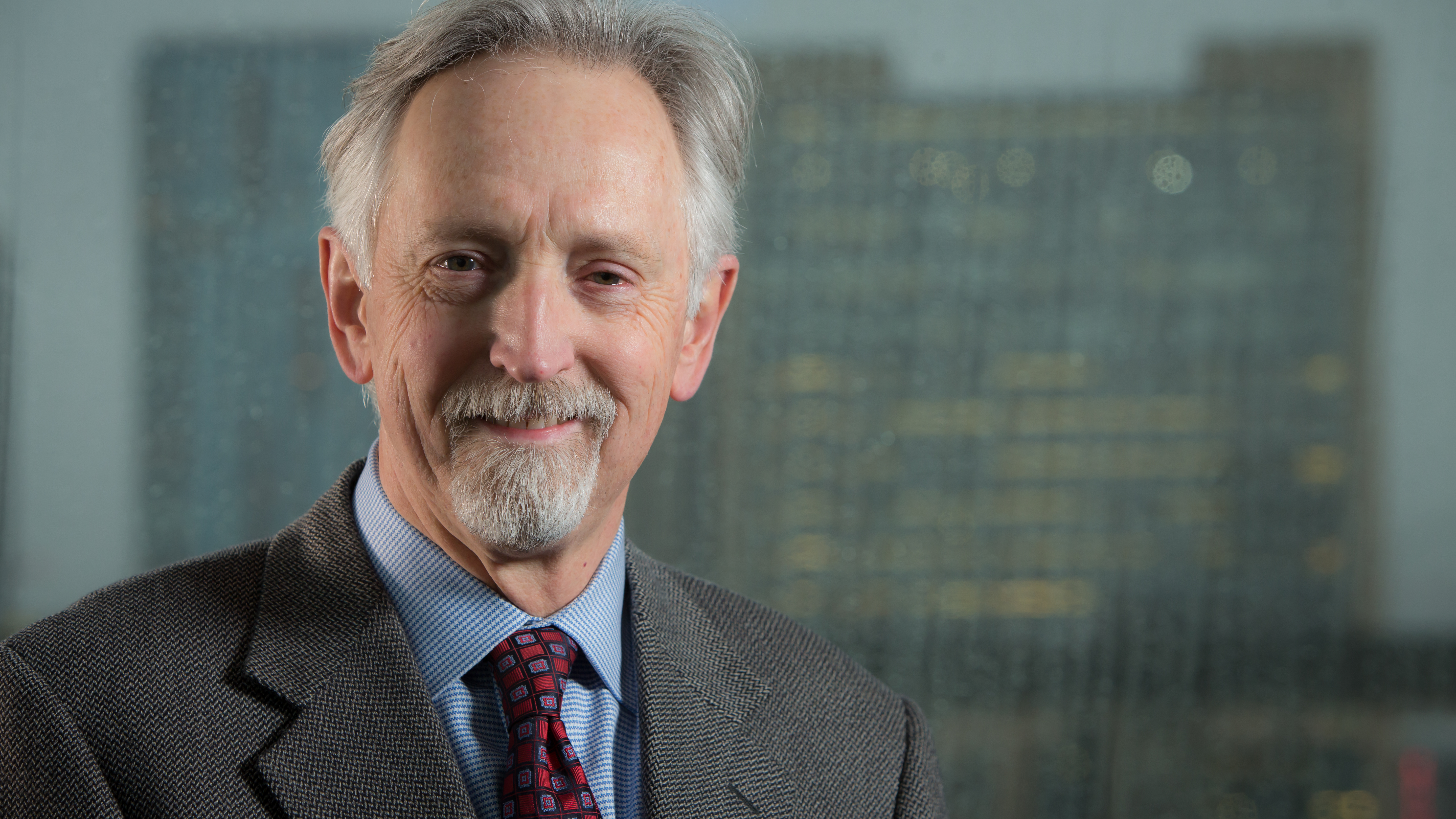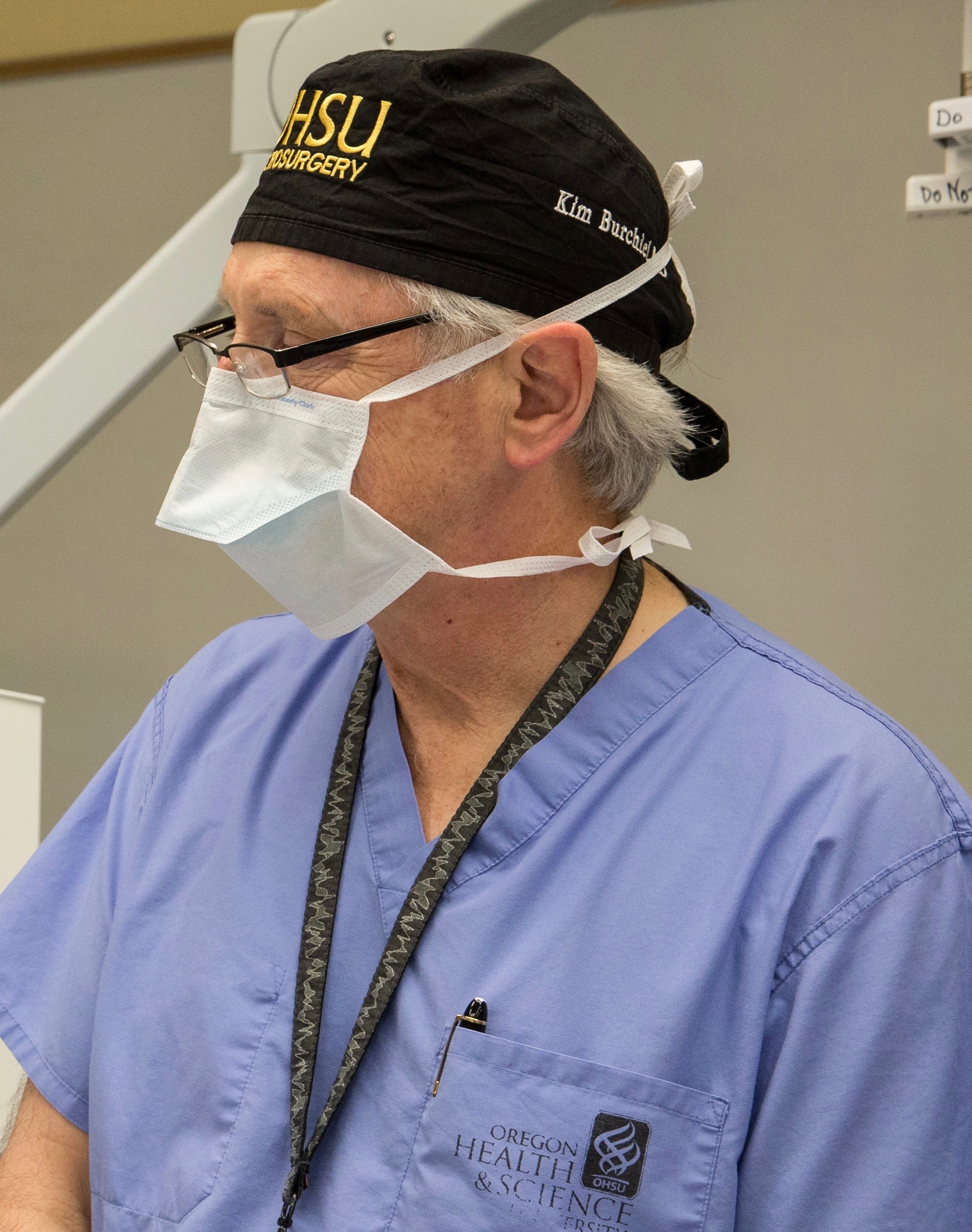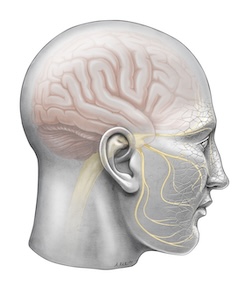Facial Pain Diagnosis and Treatment
We understand that you and your facial pain need individual care. At the OHSU Brain Institute facial pain clinic, you will find providers who are committed to identifying the exact cause of your pain. Your care team will also offer the most advanced treatment options. We offer:
- A team led by Dr. Kim Burchiel, one of the world’s leading experts on facial pain.
- The most experienced facial pain specialists in Oregon.
- A strategy developed by Dr. Burchiel and now used around the world to make an exact diagnosis.
- Expert surgical care using the most advanced, effective techniques.
- High-resolution 3D images for precise diagnoses and treatment.
- Team-based care with close collaboration among providers.
- Complementary medicine, including acupuncture and nutrition counseling, through our Neurology Wellness Clinic.

Diagnosing facial pain
You may have seen other doctors or endured many tests and dental procedures before coming to us. We’re committed to finding relief for your pain as quickly as possible.
Accurate diagnosis: Our approach is based on our experience treating thousands of patients. The first step is making an accurate diagnosis. Identifying the exact source of your pain is key to successful treatment. It also avoids unnecessary procedures.
Interactive questionnaire: Our innovative online tool is the world’s first to diagnose facial pain using questions about your medical history. It is 90 percent accurate for diagnosing trigeminal neuralgia, a type of facial pain involving the face’s main nerve. We will go over the questions in detail when you come to the clinic.
Classification system: The questionnaire is paired with our detailed classification system, also developed at OHSU, to precisely identify your type of pain. This helps your care team recommend an effective treatment plan much more quickly. Read more about this system on our Understanding Facial Pain [link] page.
Exam: We will do a complete head, neck and neurological evaluation.
3D MRI: We use a special MRI method that results in detailed, 3D magnetic resonance images. These images let doctors see nerves and blood vessels from any angle. They can identify the exact source of your pain, such as where a nerve is being pinched (compressed). These images can also show the absence of a compressed nerve.
Treatment recommendations: Your care team will talk with you about options for your specific condition. For some conditions, such as temporomandibular joint disorder (TMJ), you may be referred to other OHSU specialists.
Treatments
The main type of facial pain we treat is trigeminal neuralgia, a shooting pain usually caused by a blood vessel pressing against the trigeminal nerve. OHSU offers the world’s most advanced treatment for trigeminal neuralgia.
Medication
Medication is usually the first step because it can control trigeminal neuralgia for years.
- Anticonvulsant medications: These prevent your nerve from sending too many pain signals. They work well for trigeminal neuralgia at first but may lose their effectiveness or cause more side effects over time.
- Antidepressants: These can help for some kinds of facial pain, but not trigeminal neuralgia.
Surgery

Your team will discuss surgical options with you if medication no longer helps or if you have unwanted side effects.
Dr. Burchiel, an international expert on surgery to relieve facial pain, and Dr. Ahmed Raslan have treated thousands of patients using the most advanced techniques available.
Your care team will map your nerves and blood vessels with a high-resolution 3D MRI so they can:
- Check for compression
- Identify the exact cause of your pain
- Precisely plan your surgery
Surgery options include:
What it is: This surgery relieves pressure on the trigeminal nerve. The surgeon moves blood vessels pressing on the nerve.
How it works: You are given general anesthesia to put you to sleep, and your head is secured. Your surgeon makes a small cut behind your ear and uses a surgical microscope to see nerves and arteries. The surgeon exposes the nerve root and gently moves the artery away. Your surgeon places a Teflon pad between the nerve and artery to keep the pressure from occurring again.
Recovery: Most patients are in the hospital about three days. Usually, you can gradually return to full activity within a few weeks. Pain relief is often immediate, and medications are discontinued over two weeks.
What it is: If you don’t have nerve compression, Dr. Burchiel has developed a technique to comb and separate the nerve fibers to reduce pain signals.
How it works: You are given general anesthesia to put you to sleep, and your head is secured. Your surgeon makes a small cut behind your ear and, using a surgical microscope, exposes the nerve and uses a tool to gently separate the fibers.
Recovery: Most patients are in the hospital about three days. Usually, you can gradually return to full activity within a few weeks. Pain relief is often immediate, and medications are discontinued over two weeks.
What it is: This procedure uses heat to disable the nerve, interrupting the pain signals to your brain.
How it works: You are given medication to help you relax and to minimize discomfort. During the procedure, the doctor might ask questions to pinpoint the nerve fibers that need treatment.
Guided by imaging technology, your surgeon inserts a special needle through your cheek to where your trigeminal nerve divides into three main branches. The surgeon directs the needle to the division causing your pain, then sends a tiny heating current to damage the nerve.
Recovery: This is an outpatient procedure. You will need someone to take you home afterward.
What it is: A small device sends mild electrical signals to your trigeminal nerve.
How it works: While you are lying down, your doctor gives you a shot of local anesthetic to numb your face. The doctor places a small electrode (a metal wire that conducts mild electrical signals) under your skin.
Your doctor uses a CT scan to make sure the electrode is in the right area, then connects it to a device that delivers tiny electrical impulses. You may feel burning, itching, pricking or tingling.
Once you feel these sensations, the electrode is attached to a small nerve stimulator that is implanted under the skin temporarily. If the treatment works during a trial period, the stimulator is implanted permanently.
Recovery: You stay in the hospital overnight for observation and go home the next day. Your doctor gives you instructions for using the stimulator. At home, you record and rate your pain and how much medication you take.
Complementary medicine
Some patients report reduced pain or pain relief after adding these treatments to their standard medical care. Your care team can connect you with these services at the OHSU Brain Institute’s Neurology Wellness Clinic.
Acupuncture: Needles are used to stimulate the nervous system and release chemicals in the muscles, spinal cord and brain.
Meditation: Mind-body therapies such as meditation, breathing techniques and yoga can help you relax and concentrate on sensations, breath and other functions. These treatments can decrease stress and improve quality of life for people with chronic health conditions, research shows.
Nutrition: A nutrition counselor works with your care team to help you change your diet to feel and function better. The counselor might recommend supplements such as vitamins, minerals or fish oils.
For patients
Call 503-494-4314 to:
- Request an appointment
- Seek a second opinion
- Ask questions
Location
Parking is free for patients and their visitors.
Center for Health & Healing Building 1
Neurological Surgery, eighth floor
3303 S. Bond Ave.
Portland, OR 97239
Refer a patient
- Refer your patient to OHSU.
- Call 503-494-4567 to seek provider-to-provider advice.
Facial pain tool

Use our interactive questionnaire to assess the kind of facial pain you have and to learn about treatment options.